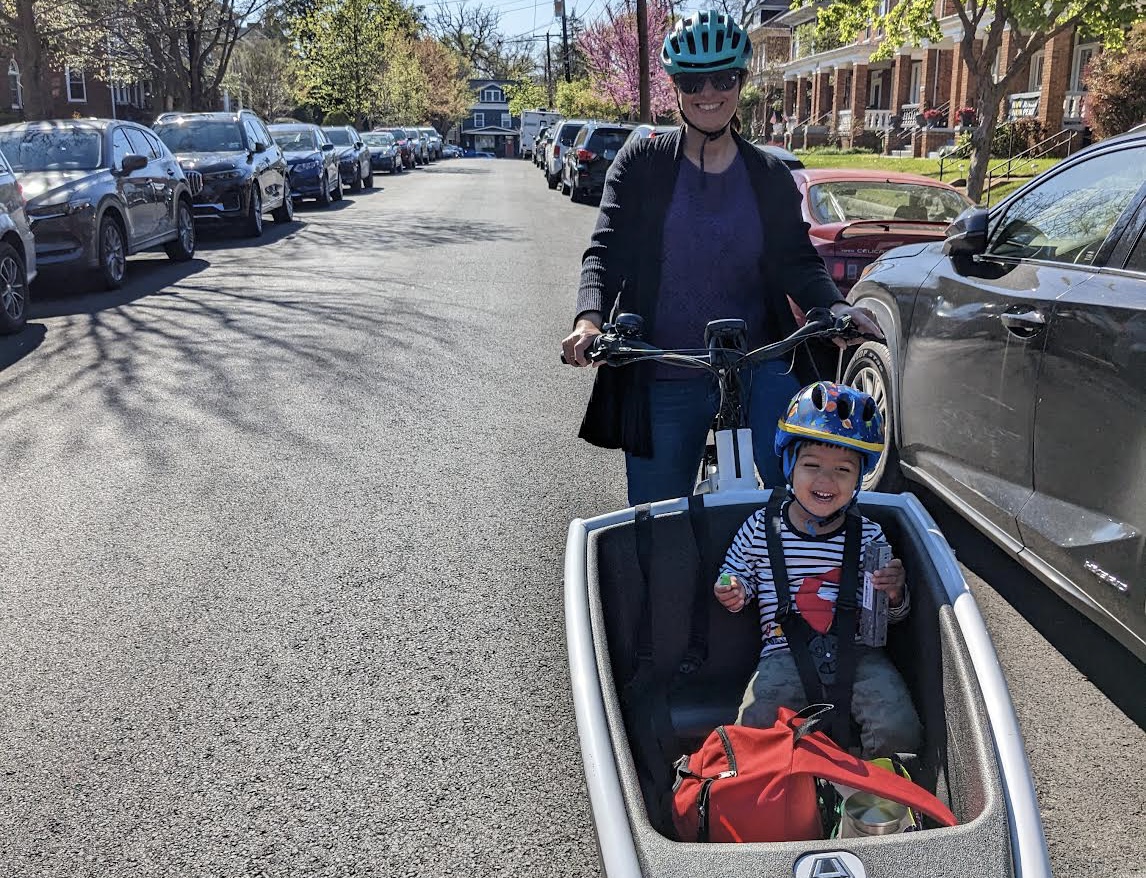I’m sure you’ve heard this before from other parents, but my kid is the cutest, silliest, most energetic three-year-old ever. Like most toddlers in Washington, D.C., he’s happiest waving to the buses, garbage trucks, and dump trucks that drive past as we walk and bike around town. And like most parents, I worry about his health and want his growing lungs breathing in healthy air.
As a clean transportation advocate, my work is intrinsically linked to ensuring my son and his peers grow up on a healthy planet and can breathe clean air every day.
This month, the Environmental Protection Agency (EPA) announced a set of proposals that can significantly cut pollution from cars, trucks, and buses. The targets the EPA is considering would gradually phase in starting in model year 2027 through 2032. Given the recent technology advancements, the market is primed to accelerate zero-emission vehicle (ZEV) adoption in response to these standards.
These regulations are being proposed just weeks after the Intergovernmental Panel on Climate Change (IPCC) released its latest synthesis report concluding that we are barreling toward irreversible climate catastrophe. As the transportation sector is the leading source of climate pollution, it’s imperative we urgently cut emissions from cars, trucks, and buses.
To reach our climate goals, we must emphasize the importance of walking, biking, taking public transportation, and reducing sprawl. The IPCC recommends that planners advance dense cities that encourage transit and active transportation and are affordable to ensure that low-income people aren’t pushed out into car-dependent areas. For Americans who choose to drive, we need to make sure that zero-emission vehicles are affordable, accessible, and fit their needs.
The EPA’s plan to set stricter pollution standards for all kinds of vehicles, from passenger cars to freight trucks, comes at a pivotal moment. In 2022, electric vehicles crossed five percent of new car sales, a crucial threshold that represents the tipping point for mass adoption. Congress also passed two historic bills to invest in clean car, truck, and bus manufacturing, vehicle incentives, and EV charging infrastructure.
The proposed standards would achieve significant climate and public health benefits. According to the EPA, they would cut nearly 10 billion tons of CO2 emissions and reduce reliance on 20 billion barrels of imported oil through 2055.
The car standards will help reduce the climate and air pollution caused by new cars, SUVs, vans, and light- and medium-duty trucks. The truck standards will focus on the largest vehicles including delivery trucks, garbage trucks, public utility trucks, transit buses, shuttle buses, school buses, and tractor trucks.
Here are three major takeaways about the EPA’s proposals:
-
The EPA’s proposed car standards parallel some of the manufacturers' own commitments, such as Volkswagen, Volvo, and GM pledging to go 100 percent electric by 2035.
- The EPA regulations are being proposed on the heels of tremendous investments from the Infrastructure Investment and Jobs Act and the Inflation Reduction Act, which will accelerate the adoption of zero-emission cars, trucks, transit and school buses, and port equipment; and the robust charging network needed to support EVs.
- Manufacturers have been prioritizing their supply of zero-emission vehicles for specific states that have adopted stricter regulations than the federal car and truck rules. Eleven leading states, which together make up 28 percent of the country's truck and bus fleet, have adopted or are considering state clean trucks standards. Similarly, 18 states plus Washington D.C., which make up 41 percent of the country's car fleet, have adopted or are considering state clean car standards. These states have gotten a head start in preparing for the ZEV transition by investing in charging infrastructure and creating incentive programs.
Finally, given the acceleration to zero-emission, the auto industry must ensure that it is moving towards an equitable and sustainable supply chain. The newly established Lead the Charge coalition is pushing companies to advance responsible sourcing, use recycled materials, and slash manufacturing emissions. And we are tracking the companies that are upholding strong human rights in the mining, refining, and manufacturing supply chain.
These proposals represent a cornerstone of US climate policy and are crucial to cutting dangerous vehicle pollution so communities across the country can breathe clean air. The EPA must finalize these proposed standards this year and make them as strong as possible. Throughout the rule-making process we’ll be reaching out to Sierra Club volunteers to take action by sending EPA an email or signing up to testify at the upcoming hearings. My son and I are so appreciative of your support.
